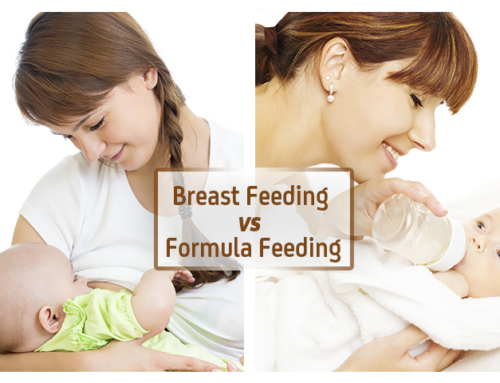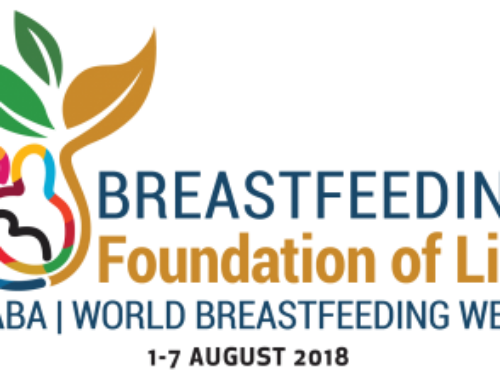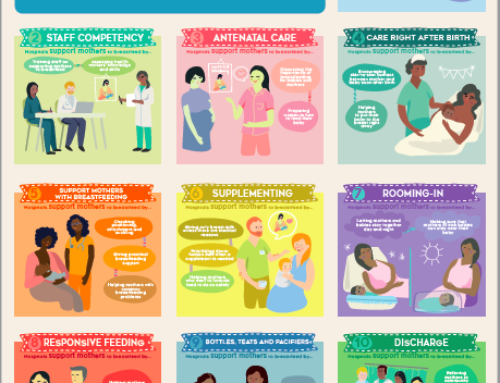This piece first published in The Natural Parent Magazine, Issue 9, 2012
Note: If you see a formula advert on here, please comment and let me know the full brand. I have blocked formula companies but they now have categorized their products not only under the baby food category but the more general “food” category meaning I need to block them one by one. I do NOT endorse any formula adverts and would like to block them all asap. While I believe I have covered all North American companies, I know there are those elsewhere that I am unaware of. Thank you for your cooperation!
If you read Evolutionary Parenting regularly, it should be clear that I am an advocate of breastfeeding (even though it’s taken on a bit of a bad name these days). The degree to which I support it has actually caused controversy with people getting upset over the perceived slight to mums who do not breastfeed for one reason or another. However my focus is not on moms who make this choice, but the system that forces many of them into that choice. I believe mothers should have options. You can’t breastfeed? Pump. Can’t pump? You should have the option of expressed breastmilk from someone else. To me, formula should be a last resort that only select few women have to go to or truly choose to go to. Breastfeeding is the biological norm that babies expect, and for mothers who hoped to breastfeed and couldn’t for whatever reason (there are so many booby traps, it’s hard to count), there are ways to mimic this relationship. Even if breastfeeding wasn’t your choice, there are considerations one should at least look into when bottle-feeding.
All Bottle-feeding Isn’t Equal
One of the things that gets lost in translation is that “bottle-feeding” can be either the use of formula or bottle fed breastmilk and some babies are exclusively fed this way. This type of bottle-feeding ranks second on the WHO list of best ways to feed your baby (only behind breast milk from the breast) and thus many of the concerns that breastfeeding advocates speak about simply do not apply. From a health perspective, most of the “benefits” of breastmilk exist for these bottle-fed babies who are receiving breastmilk in the bottle. Compared to formula, expressed breastmilk still contains antibodies and other immunological components that help babies, especially with respect to more serious illnesses like cancer
What pumping may not offer health-wise is immediate assistance when an infant presents with an illness. When a breastfed infant latches to the nipple, it is hypothesized that small amounts of the baby’s saliva enters the breast, providing information to mum’s immune system about what antibodies are needed at that moment[6]. This means if mum has not already passed these specific antibodies on to her child via breastmilk (either expressed or from the breast), her body can start to create them for her child and pass them on as soon as they are available. If a child does not latch, this type of immunity can take longer to receive as mum will have to come into contact with the illness herself to create the antibodies and we know that this does occur via moms smelling and kissing and touching their babies, but may not be as fast if the hypothesized saliva mechanisms is, in fact, real.
These health reasons should force you to at least consider donated breastmilk or pumping if you decide you don’t want to or can’t breastfeed from the breast, but it also should remind the rest of us that just because you’re seeing a bottle, doesn’t mean you’re seeing formula. However, there are still some factors that are relevant to all bottle-feeding babies that mums should take note of. What I share below are three of the scientific risks relevant to bottle-feeding and how you can overcome them to get your child closer to what they biologically expect (and in the case of bottle-feeding breastmilk, incredibly close). [Of note: If you live in a place where you can get donated milk from breast milk banks, please be aware that milk is generally pasteurized, meaning is has lost a lot of the health benefits, but still remains superior to formula.]
[Note: As stated above, breastfeeding is and should be considered the biological normal feeding method for an infant with all other outcomes considered with that in mind. However, research papers do not always use this language and in an effort to be consistent with what is reported, for those who go and read the original sources cited, I have used the language used in the research papers. However, please keep in mind that breastfeeding = normal. Any risks or benefits should be seen relative to that normal behaviour.]
Bonding
Research finding: Studies has shown that infants who breastfeed from the breast are more likely to have bonded with their mother than those who bottle-feed[7]. In fact, not only is it bonding, but babies who bottle-feed are more likely to be neglected or abused when controlling for myriad other socio-economic and family factors[8]. Within the realm of bonding, researchers have identified two main components (though there may be more) that are at play with breastfeeding versus bottle-feeding: oxytocin[9] and eye contact[5].
What You Can Do: Oxytocin is triggered in part from the skin-to-skin contact, a fact that all bottle-feeding mums can take advantage of. A mother who is regularly bottle-feeding should be cognizant of the importance of skin-to-skin contact and how that releases oxytocin in both mum and baby which leads to mutual feelings of love and comfort. This means if she takes the time to ensure she is getting enough skin-to-skin contact, the bonding process can be made much easier. One simple way to do this would be to mimic breastfeeding at home with the bottle by removing your shirt and holding your infant close. Eye-to-eye contact is a normal part of breastfeeding for many mums, but is sometimes conspicuously absent when a baby is fed by bottle (seems odd, I know, but it has been found). It may be that the infant being literally attached to a breastfeeding mum provides a cue to mum to continue to check on and look at her infant, but regardless, eye contact is key as it is related to the ability to empathize and love another individual[10]. This means that if you’re bottle-feeding your infant, you should make sure to take the time to look at them. Dedicate at least one feeding a day where you don’t do other things while feeding, but sit and truly stare at your infant. Even better, combine the skin-to-skin with eye contact and give your baby the experience they are biologically expecting.
Intelligence
Research finding: Multiple studies have reported finding that breastfed babies showed greater cognitive development later on (for a review see [11]). While many studies focused on IQ or cognitive development during preschool years, this finding also held with academic success in elementary school years[12]. This early evidence suggested that pumping would lead to the same effects as breastfeeding, but more recent research has cast these findings in doubt. It turns out it may not just the breast (v. formula) that has the effect on intelligence, but also feeding on demand[13]. There is a confound in that breastfed babies are far less likely to be fed on a schedule and bottle-fed babies are far more likely to be fed on a schedule. So on top of or instead of breastfeeding per se (more research is needed to know if feeding on demand replaces breastfeeding in the link to intelligence or adds to it), feeding your child on demand (bottle or breast) is related to higher cognitive development and intelligence.
What You Can Do: Well, really this one is simple – feed your child when he or she is hungry and that’s it. It can be a pain, it can be far more often that you’d expect, but this is what your baby needs. With respect to cognitive development, infants need lots of energy for brain development. Their little brains are growing at an astronomical rate and when you leave a brain without energy to call upon, it simply won’t develop to the best of its capacity. If you think of how alert and capable you are when you’re hungry, you now have an idea of how your infant is functioning; only your infant has to grow his or her brain, along with using it. So ditch the schedule and when your infant cries out for food, get a bottle ready and feed away.
Weight Problems
Research Finding: Much research has focused on the distinction between breastfeeding and formula-fed infants with strong findings supporting a link between the risk of being overweight and the use of formula (for a review, see [14]), presumed to be due to the nutritional differences between the two feeding types. However, there is research that finds a distinction based on bottle-feeding (which also includes short – < 3 months – durations of breastfeeding) too[15].
What Can You Do? Two factors seem to be at play. One is the nutritional differences between formula and breastmilk and there is nothing that can be done about this except to suggest that parents look to donated or expressed breastmilk instead of formula if that’s possible (if not, the risk of obesity is still far higher from a sedentary life later so make sure you’re active and leave it at that). The second, however, has to do with the composition of breastmilk from the breast with breastfeeding offering babies foremilk first, which is much lighter and has a higher composition of water in it and is used to quench thirst, then hindmilk, which is thicker and contains more fat and protein (though still considerably less than formula which is why breastfed babies need to eat more often) to still the infant’s hunger. If infants do not get foremilk, or it is blended with hind milk, they can overeat in an attempt to quench thirst, even when hunger has been satiated. Luckily, if you are pumping, you can actually pump to separate out the fore-and hind-milk (this can also be helpful for mums who have too much foremilk, leading to weight-gain problems). Lactation consultants should be able to help you figure out how to do this, or if not, there is a great document from the Children’s Hospital of Philadelphia on how to pump fore- and hind-milk separately to give your baby a good mix[16]. There is one other consideration that mums should be aware of and that is, once again, scheduled versus on-demand feeding. Scheduled feedings can also lead to greater risk of overweight as infants are forced to overeat to ensure they do not go hungry later. It is basically teaching an infant to override or ignore his or her internal check on when he or she is full which can lead to problems eating later on in life as well.
Conclusions
Bottle-feeding has become a standard part of parenting in Western society both for mums who have to return to work and are expressing for their babies, those who receive donor milk from other mums, and those who are using formula. While expressed breastmilk is superior to formula in the health department, bottle-feeding has certain limitations regardless what’s inside given it is not what babies are biologically expecting. When parents read the research on bottle-feeding, they often become quite defensive because of the implications of the findings, and while I understand that, the fact remains that the more a mother knows, the better she can do for her child. In the case of breast- versus bottle-feeding, some of these limitations can be overcome with some extra work on behalf of mum, meaning some of these findings don’t have to be true for any parent who bottle-feeds. Instead of getting angry at the findings, try to make sure you don’t become one of these statistics by doing all you can to ensure your child gets as close to what he or she expects as possible. The suggestions herein should help you on a path in which both mum and baby benefit.
Addendum: It was brought to my attention that I forgot to mention one more factor many bottle-fed babies don’t have is pacing. Bottle-feeding can mean the baby gets too much, too quickly whereas breastfeeding allows the baby to regulate how much he or she gets while feeding. A great resource on information and how-to’s can be found here. Read it and add that to ways to make bottle-feeding more normal and natural for babe!
Many mums are unable to physically feed their baby for various reasons, and as such there is always ample need for a mother’s breastmilk to help those mums who can’t breastfeed their child on their own.
If you live in Australia, it seems that there are 4 milk banks: Mothers’ Milk Bank in northern New South Wales (www.mothersmilkbank.com.au), the PREM Bank in Perth, Western Australia (https://www.kemh.health.wa.gov.au/Our-services/Service-directory/Prem-Milk-Bank), the Mercy Health Breastmilk Bank in Victoria (www.mercyhealthbreastmilkbank.com.au) and a new one just opened in the last few weeks at the Royal Brisbane and Women’s Hospital in Brisbane, Queensland (http://www.rbwhfoundation.com.au).
If you live in New Zealand, there is currently no milk bank, but there is a non-profit group, Mothers Milk NZ, working towards the development of a national milk bank.
If you live in Canada, there are now two milk banks. The first is run by Women’s Hospital in Vancouver, BC. Although located on the west coast, women from all over the country can both utilize and donate to it. For more information, please go to http://www.bcwomens.ca/our-services/labour-birth-post-birth-care/milk-bank for a list of FAQs and contact information. The second is in Toronto, ON, and is a partnership amongst three hospitals in Toronto. They accept donations from all over and will cover the cost of shipping milk to the bank. For more information, please go to http://www.milkbankontario.ca/ for all the information you need!
If you live in the United States, several states have milk banks which you can contact to see if they have milk you can purchase. I don’t know how each of them sets their standards or if they mail milk out-of-state (if you live in a state without a milk bank), but a list of all the milk banks in the US, with contact information, can be found here: https://www.hmbana.org/find-a-milk-bank/.
If you live in the United Kingdom, you have 17 milk banks (go you!) and the primary site with information and how to donate is found at http://www.ukamb.org/. And as an aside, I love their motto – EVERY DROP COUNTS. (Yes, it does.)
And of course, no matter where you live there are the always-wonderful Human Milk 4 Human Babies and Eats on Feets networks which are (nearly) global. Here you will be able to network with other mums who may live in your area and have breastmilk for you. This is not a regulated endeavor and is running solely on the goodwill of mothers everywhere.
Good luck and happy feeding!
[Photo: GETTY from the Telegraph UK]






Did you know there is an advertisement for Nuture Gold Infant Formula on this page ? Is this a horrible coincidence ?
I have formula companies banned from advertising, but they’ve snuck into the “food” category. Thank you for stating the actual name of the company. I can ban them too. It’s a horrible coincidence from companies being sneaky and not sticking to their categories!
There is a Cow and Gate advert on this page!
Thank you – blocked 🙂
one unfortunate thing concerning donated breastmilk that you don’t mention is a lot of the ‘better than’ qualities are ruined by pasturization. All regulated milk banks (in the U.S.) pasturize. That means all antibodies, stem cells, probiotics, and any other living elements of the milk are killed along with any theoretical pathogens. It’s still got to be better than formula, but something to consider if you are making a choice between banked, person-to-person share, or pumping. Since donors can be tested for pathogens, breastmilk is naturally sterile (and in fact antibiotic and probiotic), and sterile bottles can be purchased, it would seem to me that encouraging person-to-person as opposed to regulated banks is the way to go
Yes – great point! Here in Canada they do the same, but there isn’t enough bank milk to go to anyone outside the hospital (so preemies) so I just didn’t think about it. If people in the US can get bank milk, it’s definitely a consideration! Thank you 🙂
You can get it from banks in the U.S., it’s very expensive, limited supply, and you need a prescription, but there is some availibility. In addition to ‘several states’ having milk banks, a lot of individual hospitals have small milk banks as well.
Thank you for another great article 🙂 Just thought I would let you know that there are now four milk banks in Australia – Mothers’ Milk Bank in northern New South Wales (www.mothersmilkbank.com.au), the PREM Bank in Perth, Western Australia (www.kemh.health.wa.gov.au/services/PREM_Bank/index.htm), the Mercy Health Breastmilk Bank in Victoria (www.mercyhealthbreastmilkbank.com.au) and a new one just opened in the last few weeks at the Royal Brisbane and Women’s Hospital in Brisbane, Queensland (http://www.rbwhfoundation.com.au) – from Shona Cassels IBCLC, Gold Coast, Australia.
That’s great! Thank you for that info 🙂 I will have to update the article with that – yeah for Aus 🙂
And nice last name 😉
No problem – glad to keep sharing the milk banking information around the globe 🙂
(Knew you’d spot the surname. LOL.)
Can I make a request about the language use in this article?
Breastfeeding is the normal method of feeding an infant. Therefore, they are not smarter than formula fed babies. Formula fed babies have fewer IQ points.
Breastfed babies aren’t healthier. Formula fed babies are more likely to contract illnesses.
It’s a subtle difference, but subtlety is what got us into this mess. (And one of my personal major pet peeves.)
Jen,
I actually write that way when I’m talking about my own opinion, but when citing research, I use the terminology in the research as otherwise I get emails from people telling me that the article said something different (?!). I’ve found it generally best to stick with what the research uses so when people check citations, they aren’t confused. I’ve stated this in other articles, but a good call that I should probably add that same caveat here as well!
Cheers,
Tracy
The page with your article on sleep training ( which is great by the way and exactly what I needed to read) has got an ad for the Apta Club which I assume is from Apatamil Formula.
Thank you – as I put in the notice, I require people to report these so I can fix it 🙂
Did you happen to run across anything regarding reverse cycling and feed on demand? I imagine a reverse cycler would experience the same type of cognitive impairments as babies not fed on demand, but I wondered where it fell on the scale of FOD to scheduled feedings. Thanks!
I’ve never seen anything suggesting cognitive impairments wrt reverse cycling and I would actually be surprised if there were. Reason being that they are still feeding on demand, just at opposite times to other babies. So if the intake is the same and they are cuing when hungry and being responded to, why would there be deficits? Also I don’t think it really fits on the scale of FOD to schedules but is rather something more distinct.
Have you seen the info sheet from KellyMom? http://kellymom.com/bf/normal/reverse-cycling/
I’ve seen the kellymom page, I guess I just can’t help worrying about my 7mo old. When he’s with me, he’ll give me two hours between meals if I’m ‘lucky’. But send him to daycare or leave him with dad and he’ll go hours on end refusing bottles when I *know* he must be hungry. I figured going stretches ‘undernourished’, even by choice, would have the same effect as going undernourished because of scheduling, since either way he’d be energy-deprived. He’s never even considered giving me the fabled 8-hour stretch of sleep at night, even if he spent all day in the sling just hanging out, eating, and watching the world, haha.
Okay, so what you have is refusal more than reverse cycling. Have you tried using a cup or spoon to feed instead of a bottle? So yes, I see your concern, it’s just not really reverse cycling so much as refusing alternate forms of breastmilk.
Thanks Tracy,
My LO was 6 months yesterday and is exclusively breastfed from the breast but she feeds so often that I was really just about to give up today and put her on formula. She has woken every hour during the night the last two nights and the norm for her is 2-3 hours. I just feel exhausted! reading your article has just reminded me why I am breast-feeding though. Thanks again!
Oh dear – I know that feeling 🙂 It does get better though and soon you’ll actually miss the feedings 🙂
‘bellamy’s organic’ formul advertisement on page :/
Thank you – that’s one I’ll have to get off!
Huge fan of this website and the research. Also wanted to point caregivers in the direction of the Human Milk 4 babies facebook profiles. I had a bunch of breast milk frozen that my LO wouldn’t drink due to a lipase issue, and was able to donate it to a family who adopted their baby – teh baby apparently didn’t mind the soapy taste. The breastmilk wasn’t pasteurized – so at least most of the antibodies/immune proteins remained intact. I’ve seen lots of requests and offers be fulfilled with this amazing tool… and highly recommend it as an alternative to formula.
Thank you! I didn’t realize the FB profiles were different from the HM4HB page 🙂
As a mum who has had to supplement and have chosen, due to ease of access, to use formula (so far, though I’m thinking about checking out the HM4HB site!), I really appreciated this.
I think you’ve done a good job of balancing being honest about formula being less-than-optimal but encouraging ways that mums that have to go down that road (and I’m totally with you on it being in our system) can influence some non-biological factors to do better by our babies. Thank you.
What do you think of based on demand cup feeding of expressed breast milk? Does it have any advantage over bottle feeding aside from avoiding nipple confusion?
Putri,
I know some moms have said that cup feeding has allowed them to slow down the feedings so babe doesn’t overeat. Outside of that and nipple confusion (two pretty big things), I’m not sure there is an advantage. However, one can pace bottle feeding and if one is solely using the bottle then one need not worry about nipple confusion.
Tracy
“In fact, if 90% of babies in the US were exclusively breastfed—from a breast or bottle—for the first six months, it would save over 900 lives per year (nearly all infants under 1)”
I stopped reading right there and just skimmed the rest. If you are giving facts don’t twist them. As we know, 90% of infants in the US are *not* breastfed exclusively the first six months, and yet there is not one single report of and infant death with “failure to breastfeed” listed as the cause of death … Ever. Not one. Let alone 900. A baby dying from one of the illnesses that breastfeeding has shown to lower the risk of developing doesn’t equate to failure to breastfeed killing the baby. Breastfeeding isn’t a magic wand and doesn’t prevent anything for certain. Lowering an estimated risk makes no guarantees. Breastfed babies can still get sick and non-breastfed babies can still be healthy. A baby who dies from a respiratory tract infection may have gotten that infection even if the mom was breastfeeding, and it still might’ve been as bad, and it still might’ve killed that baby. Stating 900 babies lives would be saved every year from breastfeeding, leading a person to believe that 900 babies die per year from not breastfeeding (as the proven cause) is misleading.
And FYI the only cases of “death by formula” are happening in third world countries where the water is contaminated. The formula itself does not and has not caused death. There are not enough wet nurses and breastmilk donations to satisfy the demand of all babies who are not being exclusively breastfed in our country, that’s just not going to happen. It’s not realistic, it’s wishful thinking. Moms are unable to breastfeed ( whatever the cause of that may be – physical reason, emotional reason, stress, forced to return to work etc) + not enough donated breastmilk available = starving babies. Limiting formula means increased rates of starving babies. Starvation is a proven cause of death and it’s a proven fact that a baby starving for too long will die. Instiling fear in to mothers ie – by leading them to believe their child may die if they don’t breastfeed, is wrong and unfair. I breastfed my own baby, so no, this is not about any regret on my own part.
Why would you expect to see “failure to breastfeed”? The data is based on the rates of other diseases that exist in higher risk when using formula instead of breastfeeding.